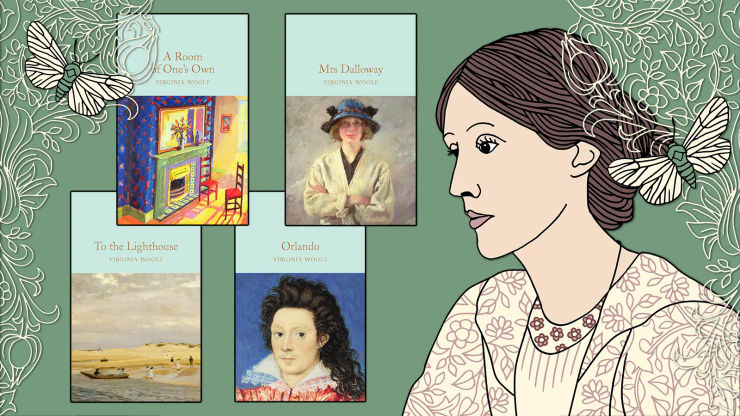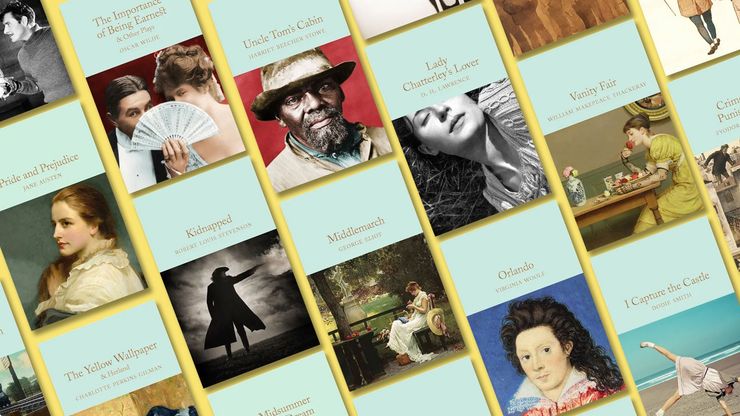Virginia Woolf, Vita Sackville-West and the Bloomsbury Group: your questions answered
Academic and author Professor Susan Sellers introduces authors Virginia Woolf and Vita Sackville-West, and the wider Bloomsbury Group.

Virginia Woolf is the hugely influential author of early twentieth-century classics including Orlando and Mrs Dalloway. We asked academic and author of two novels about the Bloomsbury set, Professor Susan Sellers, to answer your frequently asked questions about Woolf, fellow author Vita Sackville-West, and the Bloomsbury Group.
Who was Virginia Woolf and what is she most famous for?
Virginia Woolf was a pioneering English novelist and essay writer. She was born in 1882 and died in 1941 when she was fifty-nine. She is most famous for novels like Mrs Dalloway, To the Lighthouse and Orlando, as well as for the feminist essay A Room of One’s Own in which she argued that women must have access to the same educational and financial resources as men.
Unlike her brothers, she and her sister Vanessa Bell had little formal schooling, but she was a voracious reader and worked her way through the extensive library of her father, Sir Leslie Stephen. She also had tutors for subjects like Latin and Greek.
As a young writer, she was frustrated at how novelists of the time described everything from the outside, resolving in her own work to ‘look within’ and capture the life of the mind in all its many-layered complexity. This led to many innovations across the ten novels she published in her lifetime. In Mrs Dalloway, for example, she developed a way of delving into a character’s past without breaking the flow of their story in the present. In Orlando she explored the fluid and multiple nature of self through a character living hundreds of years who changes sex halfway through.
Virginia married her husband Leonard Woolf in 1912. Their marriage was, by her own account, a happy one. With Leonard, she set up the Hogarth Press, which gave her valuable freedom to experiment in her writing since she did not have to conform to the preconceived notions of a commercial publisher. She and Leonard published many important authors on the Hogarth Press, such as the American poet T. S. Eliot and the New Zealand short story writer Katherine Mansfield.
Who were the Bloomsbury Group?
The Bloomsbury Group was a friendship alliance of thinkers and artists living and working in Bloomsbury in London through the first half of the twentieth century. The group is associated with innovations in literature and art, liberal politics, pacifism and free-thinking – especially in relation to sexuality and gender equality.
Prominent members included Virginia Woolf, her artist sister Vanessa Bell, Vanessa’s husband the art critic Clive Bell, Virginia’s husband the writer Leonard Woolf, the artist Duncan Grant, the intellectual and economist John Maynard Keynes, his wife the Russian dancer Lydia Lopokova, the biographer and reviewer Lytton Strachey, and the art critic and curator Roger Fry. The group first met in 1905 after Vanessa Bell rented a house for herself and her siblings in Gordon Square in Bloomsbury. After the outbreak of the First World War in 1914, Vanessa rented Charleston farmhouse near Lewes in Sussex. From this point on, the group divided their time between London and Sussex.
Who was Vita Sackville-West?
Vita Sackville-West was a prolific, successful and prize-winning author. She wrote novels, novellas, poetry collections, short stories, children’s books, biographies, histories, travel guides and books on gardening. She was also a regular columnist for The Observer newspaper.
She was born in 1892 and grew up at Knole, a stately home near Sevenoaks in Kent. Her father was the third Baron Sackville. Though an only child, Vita’s sex prevented her from inheriting the family home at Knole. Vita had numerous relationships with women, including a long affair with fellow author Violet Keppel Trefusis. She married the British diplomat and author Harold Nicolson in 1913 and they had two sons. Vita and Harold were open with each other about their same-sex love affairs and she accompanied him to Tehran when he was posted there in 1925. In 1930 they bought the ruins of Sissinghurst Castle in Kent, where Vita had a writing room in the still-standing Elizabethan towers and where, with Harold’s help, she created a now famous garden. Vita died of cancer in 1962 at the age of seventy.
Were Vita Sackville-West and Virginia Woolf in a relationship?
Yes, and they remained lifelong friends after their affair ended. Vita Sackville-West and Virginia Woolf first met in 1922 at a Bloomsbury dinner. At Virginia’s request, Vita sent her a copy of her newly published history Knole and the Sackvilles’ They met again and began writing letters to each other. In 1924, Virginia published one of Vita’s novels, which Vita dedicated to Virginia.
They became lovers in December 1925. It seems to have been the attraction of opposites. In her diary, Virginia described the ‘perfection’ of Vita’s body but noted that her brain was not ‘sharp’. Vita, on the other hand, admitted in a letter to her husband Harold that she had at first thought Virginia ‘plain’, but admired her writing talent and intelligence. She told Harold that when she was with Virginia she felt as if ‘the edge of my mind were being held against a grindstone.’ Virginia and Vita wrote full, honest, loving letters to each other while Vita was in Tehran and saw each other whenever Vita was back in England. They remained close even after their affair ended in 1935, writing letters and visiting each other.
Was Vita Sackville-West the inspiration for Virginia Woolf’s novel Orlando?
In 1927, shortly after publishing To the Lighthouse, Virginia Woolf began to sketch out in her diary a ‘grand historical picture’ in which ‘Vita should be Orlando, a young nobleman’. The idea grew and became ‘a biography beginning in the year 1500 & continuing to the present day, called Orlando: Vita; only with a change about from one sex to another.’ It was written at great speed and published in October 1928. Virginia drew on Vita’s history of the Sackvilles and Knole, as well as her own extensive reading of history, English literature and knowledge of Vita. She included photographs of Vita and dedicated Orlando to her. Vita, who had not seen a word of it, was delighted. ‘It seems to me more brilliant, more enchanting, more rich and lavish, than anything she has done […], a book unique in English literature’, she wrote in a letter to her husband Harold. ‘I feel infinitely honoured at having been the peg on which it was hung; and very humble.’
How did Virginia Woolf die?
Virginia Woolf drowned in the River Ouse on the twenty-eighth of March 1941. She left letters for her husband Leonard Woolf and sister Vanessa Bell explaining that she felt her mental health was deteriorating. The previous year, the Woolf’s London home had been bombed by the German air force and Virginia wrote her famous anti-war essay Thoughts on Peace in Air Raid. Virginia had suffered periods of mental ill health ever since her mother, Julia Stephen, died in 1895 when Virginia was thirteen. In her letter to Leonard, she told him she feared that this time she would not recover. Her final novel, Between the Acts, was published posthumously in July 1941.
You may also be interested in. . .
Inspired by a visit to Charleston in Sussex where Vanessa Bell, Angelica Garnett and Duncan Grant once stayed, Megan Hunter's new novel is perfect for historical fiction fans interested in this cultural era.
Days of Light
by Megan Hunter
When Ivy’s brother Joseph drowns near their family home, her life is changed forever. At his funeral, she reconnects with the man she will go on to marry and the woman who will come to define her most intimate, enduring connection. Spanning from the late 1930s through World War II and the twentieth century, the novel follows Ivy across decades as she wrestles with the expectations placed on her and the quieter truths that shape her. From Megan Hunter, author of The End We Start From, comes Days of Light – a tender meditation on a life lived in pursuit of an answer.







